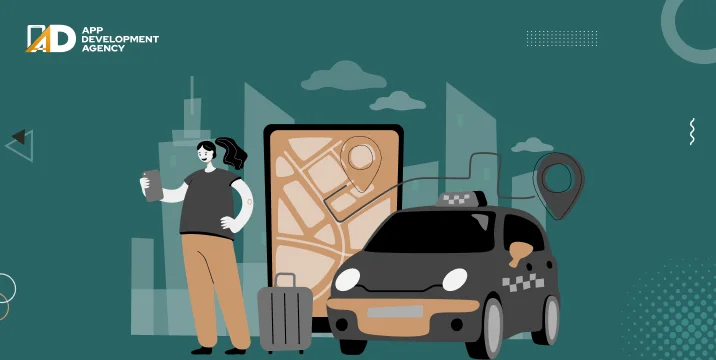Every enterprise has its own set of key processes that must be well-structured and organized. They need specialized computers and software to accomplish this. This eventually helps them reach new market segments, automate various business processes and provide high-quality services to customers.
Selecting the right combination of underlying development tools is quintessential at every stage of SDLC. These are the frameworks, platform, front-end, back-end, database, cloud hosting, Server, etc.
Selecting a technology platform can be a daunting task for developers before starting with a particular project. Non-technical counterparts might have similar queries as to which programming language is preferable – Kotlin, Python, Java, PHP, Objective C, swift, etc.? Which framework will fare better – React.JS, Node.js or Flask? Which option will be better for front-end – React, Angular or Vue.JS? What database will be suitable for a particular programming language – SQL Server, MySQL, or MongoDB? Should we self-host or hire a cloud hosting partner like Microsoft Azure, Amazon AWS or Google Cloud, etc.? This guide is helpful for the founders with a non-technical background in selecting right technology stack for their startup:
Backend (Server Side) – It powers the front-end of the application. Popular back-end stacks include LAMP, WAMP, MEAN stacks in case of PHP based frameworks like Laravel, CakePHP, Zend, Symfony, Codeigniter, Yii2, Aura, Slim, Fatfree, etc.
Front-End (Client-side) includes everything a user sees on the screen of a website, web app or a mobile app. HTML, JS, CSS are the three basic and widely popular front-end technologies.
There are a few things that even experienced developers need to think about while selecting technology stack for their:
In such cases, there is always a need to think about what is important, make a list and keep a process handy. If that process is insufficient, it is always a better idea to keep a backup process ready.
A specific technology stack constitutes of three major components: Front-end, back-end, and middleware
Following mobile app technology stack can be considered while creating a native application:
Following mobile app technology stack can be considered while creating a native application:
Developers can choose to select from React Native, ReactJS, JavaScript/TypeScript and xamarin + C# in frameworks. Rest everything can be the same as native applications.
Such applications work as websites somewhere in between a mobile app and a web browser. They make use of standard web technologies and tools like CSS, HTML5, and JavaScript. The shared code is then wrapped in a native container, which can be done using various tools, and shipped as a regular app.
Framework: Cordova/PhoneGap (an open-source framework to run HTML/JS-based applications). PhoneGap supports numerous frameworks and libraries including jQuery, AngularJS, and Knockout.js, Flutter, CoronaSDK, JQuery Mobile, Intel XDK, Native Scripts
Some prominent points that must be considered while selecting a technology stack that could be just right for your app development project are:
An incorrect technology stack can prove to be expensive as it might lead to failure of the project at later stages of the lifecycle. The selection of a technology stack is an essential part of the feasibility analysis of any project. Adopting a new technology stack in the middle of project development would require double the time and effort of the development team. A new tech stack might have frequent update cycles that will require frequent changes to keep the app running with the latest codebase. There are chances that this tech stack might become unsustainable.
The technology used in web application development can have a big effect on how your app works and how it will behave in the future. The tech stack can also influence the scalability of your product. Certain stacks will better serve different projects. Because so many different combinations are possible for your tech stack, it’s difficult (if not impossible) to generalize. But it is always a better option to get familiar with the strengths and weaknesses of your tech stack before starting with development. It helps you take advantage of the strengths and mitigate the weaknesses. Developers need to revise their tech stacks before major production work begins as changes at later stages of development might take time and money.
The right technology stack always plays an important role in mobile and web application development. The choice of technology stack depends upon the complexity of the application, availability of skilled developers and client requirements. Top web development companies always consider the pros and cons of available technologies before starting with their projects. Indian Web Developers consider a combination of tools and technologies, programming language and operating system details, required for web or mobile application which forms the basis of development.

Construction management software plans, schedules, creates budget, and monitor (1) Residential buildings, (2) Commercial structures, (3) Public buildings: (hospitals, schools), (4) Infrastructure projects: (bridges, airports), (5) Large-scale industrial facilities by centralizing data, streamlining workflows, and improving communication among stakeholders, ultimately leading to increased efficiency, better cost control, reduced errors, and more informed decision-making throughout a …
Continue reading “What is the Cost Price of Making a Construction Management App?”
Read More
Are you one of those who use ten tools to complete one task – switching from email to CRM to Project Management to Google Worksheet? You might simply require one enterprise solution! Back in 2019, in a mid-sized logistics firm, everything ran on spreadsheets and emails. It was fine until there were missed updates, clashing …
Continue reading “Why Are Enterprise App Development Companies Working So Hard?”
Read More
Is the ridesharing industry saturated now? No doubt there are already a lot of best ridesharing apps globally. However, as per Statista, the leading research site, the ridesharing market is expected to grow at 22.13% annually and reach $226 billion dollars by 2028. The numbers are crazy, and to further prove our point – Arro, …
Continue reading “14 Best RideShare Apps in 2025”
Read More